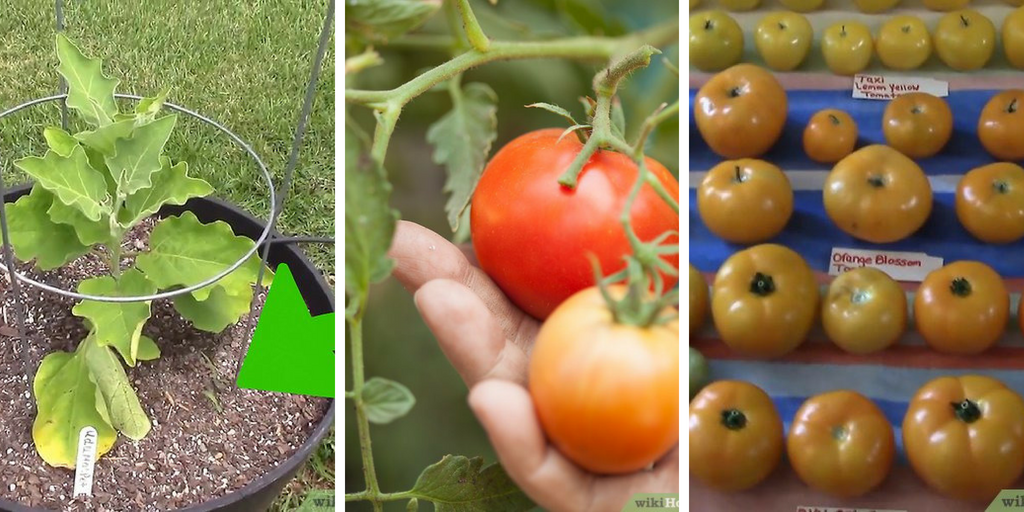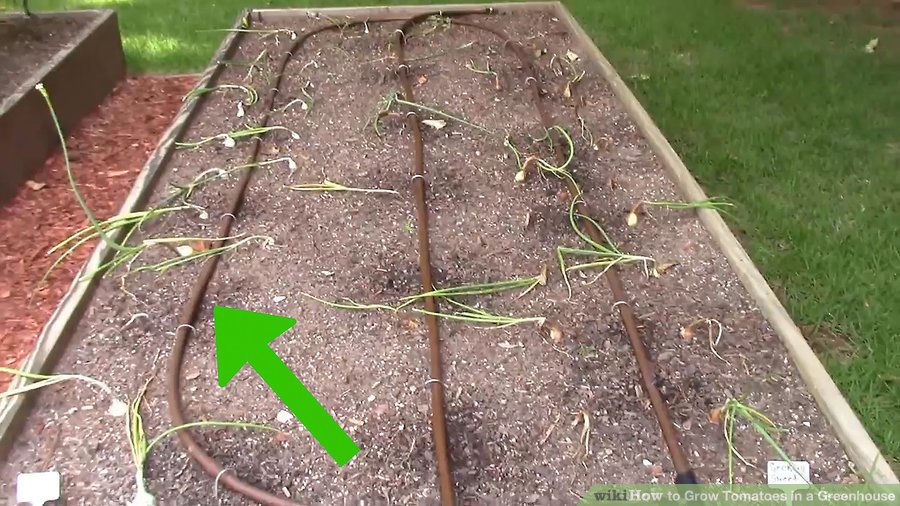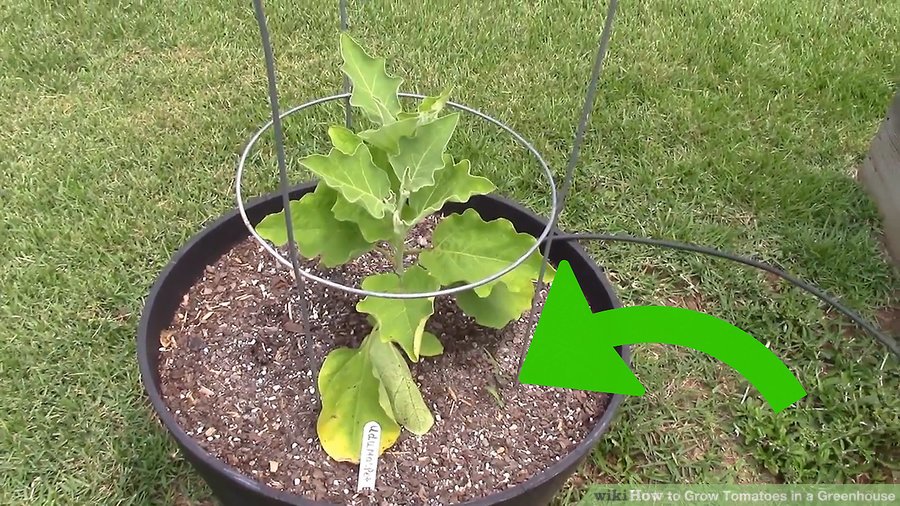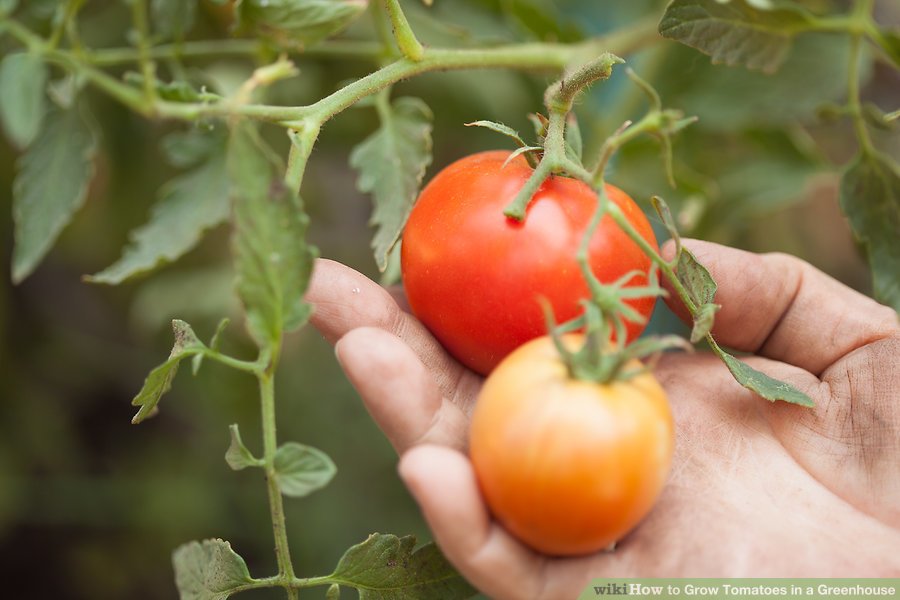Tomato is the most popular edible plant on the planet. It is delicious as well as it healthy. It lowers your cholesterol and blood pressure. Thus, in this post, we will provide you with expert gardeners’ instructions for growing tomato in a greenhouse so you could grow your favorite plant twice per year.
Growing tomato in a greenhouse is a challenging task. It needs a good temperature control and plenty of light. However, if you follow these instructions carefully, your tomato will thrive and produce heavily. Check out these steps and follow them literally for a successful tomato crop.
1. Set up your greenhouse
As we mentioned before, growing tomato in a greenhouse requires a good temperature control. Therefore, you will need to maintain your greenhouse’s temperature between 70-80º (21–27º C) F at daytime and between 60–65º F (16–18º C) at nighttime.
You will also need to control humidity. You should always try to keep humidity below 90%. This prevents excessive leaf mold. Your greenhouse probably does not contain an air conditioner, thus, you should ventilate regularly to bring fresh, dry air into the greenhouse, especially on cool, cloudy mornings.
2. Choose a variety
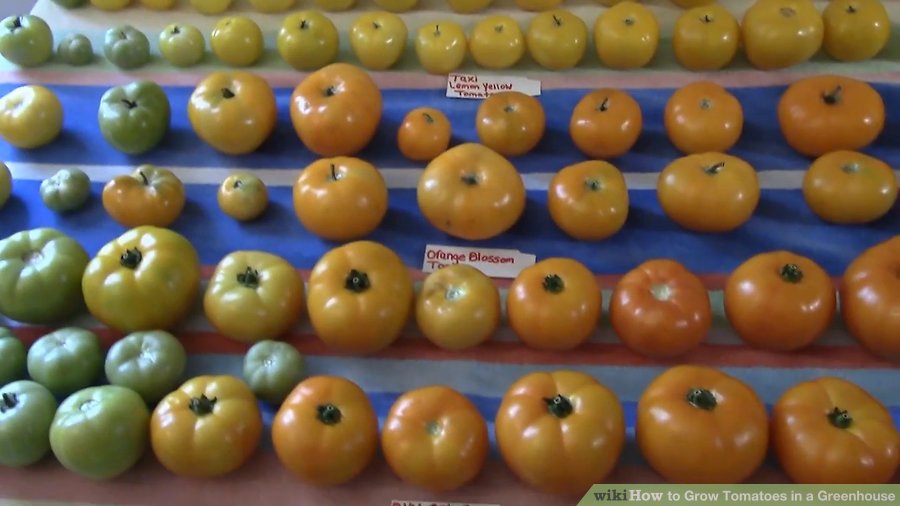
There are a lot of tomato varieties. Each variety has its own characteristics, thus, not all of them are fit for growing in a greenhouse. You have to choose carefully. If you choose a variety that does not grow in greenhouses, you will not be able to grow it no matter what you do.
3. Select a container
We have already published a post that dealt with growing tomato in containers. If you haven’t read it yet, now it is the best time to.
The container you choose should be better large and well-drained. In fact, once the seeds are 4-5 inches tall, each seed will need roughly ½ to 1 cubic foot of potting material. Therefore, it is better to choose a large container so you won’t have to transplant them to a larger container when they reach 4-5 inches tall.
Additionally, a good quality soil is also needed for growing tomato in a greenhouse successfully.
4. An irrigation system
According to expert gardeners, this is not compulsory but it is highly recommended. An irrigation system could be a drip tubing to deliver water to each plant and a fertilizer injector attached to the tubing to automate fertilizing.
5.Planting
Most people fail to grow their tomatoes because they don’t plant them properly. This is an extremely important step, read it carefully. Now that you have filled your container with the good quality soil, poke a 1/4 inch hole for each seed and cover it slightly with potting mix.
Give each plant about 4 square feet (0.37 m2) of floor space. Planting too close together can reduce airflow and encourage disease.
You should plant about 10-15% more seeds than you plan on growing. This trick allows you to discard the least healthy seedlings. Later, even if some seeds don’t grow properly, you will still have the number of seeds you wished to have before planting.
If you used a mixed potting soil, you should use plain water. If the soil you have used is soil-less mixes, use seedling nutrient solution ( 5:2:5 nutrient solution that contains calcium and magnesium is ideal. Dilute the solution according to label instructions).
In both cases, you should water until the mixture is just damp enough to press into a clump, with only a few drops squeezed out. In order to keep the mix damp, don’t forget to water regularly.
Put the container in partial sun. Once the seeds have sprouted, bring them into the greenhouse and move the container to full sun. This way allows you to check for pests and diseases. Expose them to a plenty of sunlight and keep the temperature between the earlier mentioned limits.
6. Transplant to larger containers
If your pot is small, once the seedlings are 4-6 inches, you will need to transplant them into larger pots. If you don’t, you risk that your plants will produce poorly.
7. Checking on the plants
Check the plants and if you see any insects, mold, or disease spots on a plant, do not bring any of them to the greenhouse. You should also check soil PH. If you don’t know how to check soil PH, click here to learn how. Soil Ph should be between 5.8 and 6.8.
8. Fertilizing
Start fertilizing from the fifth week after planting. Use a complete fertilizer high in nitrogen (N) and potassium (K), such as a 15-5-15 or 5-2-5. Follow the label instructions to dilute and apply the fertilizer. When the fruits ripen, reduce fertilizing and don’t forget not to fertilize in late autumn or winter.
9. Add support
Insert a stake into the container and tie your plants to it to ensure that your plants will not fall on the ground as they grow. In peak growing season, each plant will grow up to 6 in (15 cm) per week and will need tying each week. You could also use a tomato cage to keep them growing upright.
10. Pollinate the flowers
One of the unique features of tomato is that it can pollinate itself. However, it needs some help. The pollen in a tomato flower is trapped inside a tube and must be released through vibration. Since most greenhouses lack bees or high wind, you’ll need to act as the pollinator once flowers are fully open or you could bur electric plant vibrator.
11. Watch out for the plant
Once a week check the plant for suckers. Pinch them and the side shoots that emerge where a leaf meets the main stem off. Leave only the main bud at the top of the steam. If the top of your plant is damaged, the top sucker can become the new main stem.
When the plant starts to fruit, pruning becomes necessary. Once fruit starts to grow, thin each cluster down to four or five fruits, removing the smallest or most misshapen. When they become mature, snap off older leaves from the lower clusters to improve air circulation.
12. Harvesting
They later you harvest the better fruit you get. In fact, the longer the tomatoes stay on the vine, the fuller and redder they become. Therefore, don’t harvest them early, let them fully grow to enjoy a unique flavor.
Follow these instructions and your tomato crop will not fail. In fact, you will have a generous crop of tomato. Growing tomato in a greenhouse is not an easy task. However, if you pay attention to the above instructions, you will not face any difficulties.
If you don’t have an appropriate greenhouse, check out these amazing DIY greenhouse ideas.
Enjoy your gardening.

